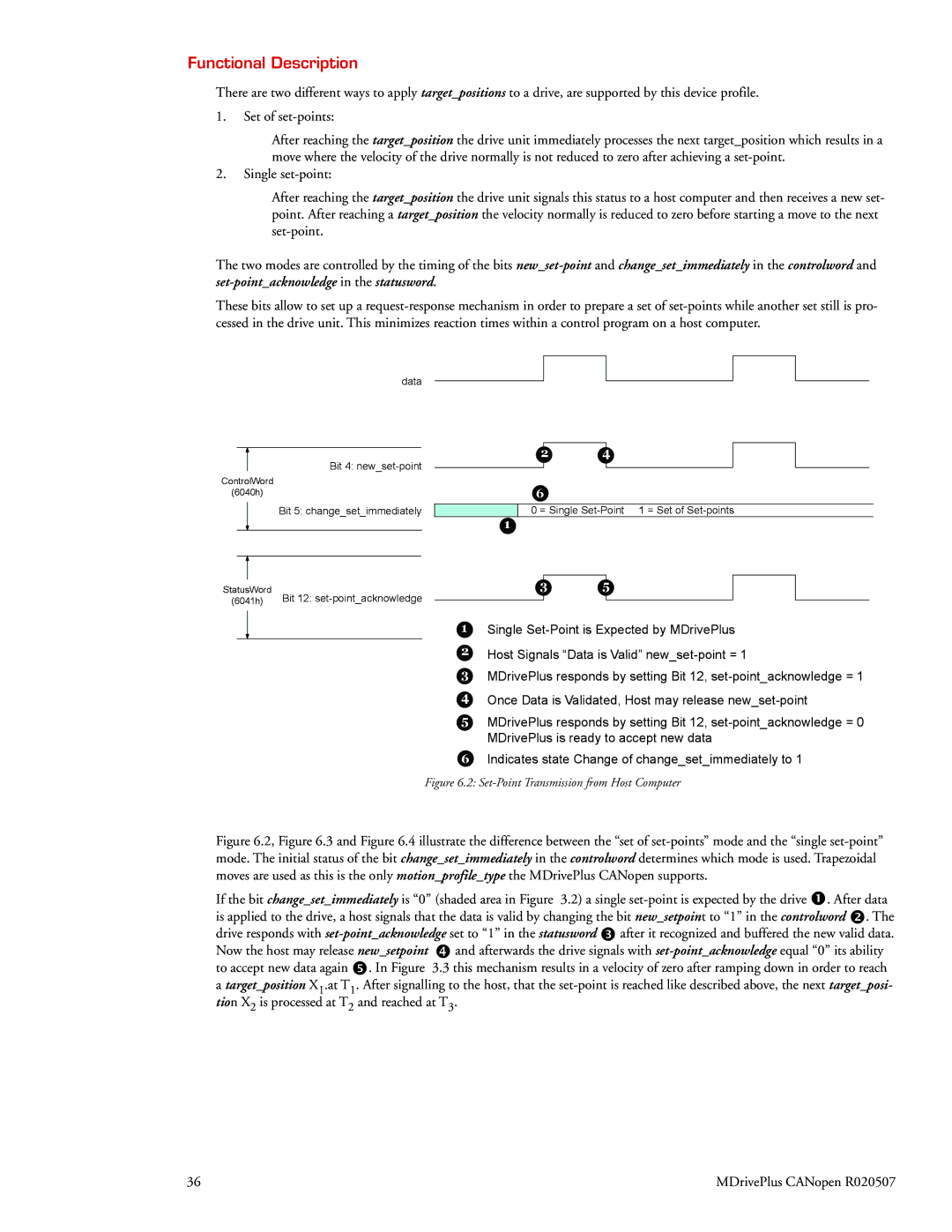
Functional Description
There are two different ways to apply target_positions to a drive, are supported by this device profile.
1.Set of
After reaching the target_position the drive unit immediately processes the next target_position which results in a move where the velocity of the drive normally is not reduced to zero after achieving a
2.Single
After reaching the target_position the drive unit signals this status to a host computer and then receives a new set- point. After reaching a target_position the velocity normally is reduced to zero before starting a move to the next
The two modes are controlled by the timing of the bits
These bits allow to set up a
data
Bit 4:
ControlWord
(6040h)
Bit 5: change_set_immediately
StatusWord | Bit 12: |
(6041h) |
2 | 4 |
6
0 = Single
1
3 | 5 |
1Single
2Host Signals “Data is Valid”
3MDrivePlus responds by setting Bit 12,
4Once Data is Validated, Host may release
5MDrivePlus responds by setting Bit 12,
6Indicates state Change of change_set_immediately to 1
Figure 6.2: Set-Point Transmission from Host Computer
Figure 6.2, Figure 6.3 and Figure 6.4 illustrate the difference between the “set of set-points” mode and the “single set-point” mode. The initial status of the bit change_set_immediately in the controlword determines which mode is used. Trapezoidal moves are used as this is the only motion_profile_type the MDrivePlus CANopen supports.
If the bit change_set_immediately is “0” (shaded area in Figure 3.2) a single set-point is expected by the drive . After data is applied to the drive, a host signals that the data is valid by changing the bit new_setpoint to “1” in the controlword . The drive responds with set-point_acknowledge set to “1” in the statusword after it recognized and buffered the new valid data. Now the host may release new_setpoint and afterwards the drive signals with set-point_acknowledge equal “0” its ability to accept new data again . In Figure 3.3 this mechanism results in a velocity of zero after ramping down in order to reach a target_position X1.at T1. After signalling to the host, that the set-point is reached like described above, the next target_posi- tion X2 is processed at T2 and reached at T3.
36 | MDrivePlus CANopen R020507 |
